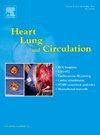阐明treg相关免疫特性与动脉粥样硬化相关心血管疾病之间的因果关系:双向孟德尔随机分析
IF 2.2
4区 医学
Q2 CARDIAC & CARDIOVASCULAR SYSTEMS
引用次数: 0
摘要
目的:调节性T细胞(Regulatory T cells, Tregs)在动脉粥样硬化的发生发展中起着至关重要的作用。然而,Treg免疫性状与动脉粥样硬化及相关心血管疾病之间的具体关联尚不清楚,阻碍了其临床治疗应用的潜力。方法:从最新的汇总水平全基因组关联研究中获得58个treg相关免疫性状,其中包括撒丁岛3,757个个体。此外,从FinnGen数据库中获得了三个动脉粥样硬化亚群和三个动脉粥样硬化相关心血管疾病。随后,采用反方差加权作为主要方法进行全面的双向孟德尔随机化(MR)分析。进行敏感性分析以验证结果的稳健性、异质性和水平多效性。进行共定位分析以检测暴露和结果是否有共同的因果变异。结果:在正向磁共振分析中确定了与三种心血管疾病风险较低相关的四种显著treg相关免疫特征。具体来说,我们确定了脑动脉粥样硬化的两个特征:CD39+活化CD4+ Treg绝对计数(OR 0.70, 95% CI 0.57-0.87, pFDR=0.040[错误发现率])和活化CD4 Treg % CD4+ T细胞(OR 0.64, 95% CI 0.48-0.84, pFDR=0.040)。此外,在其他动脉粥样硬化中检测到分泌CD4 treg的CD28 (OR 0.95, 95% CI 0.93-0.98, pFDR=0.014)。在缺血性心脏病中,活化CD4 treg上的CD28具有保护作用(OR 0.96, 95% CI 0.95-0.98, pFDR=0.020)。在脑卒中和缺血性心脏病发生后,逆行MR观察到CD3和CD4的强度分别升高,而在缺血性心脏病发生后,CD39+分泌CD4 treg的数量和比例降低。结论:本研究揭示了Tregs与动脉粥样硬化及相关心血管疾病之间存在潜在的因果关系,为今后的临床和基础研究提供了一个合理的假设。本文章由计算机程序翻译,如有差异,请以英文原文为准。
Elucidating the Causal Link Between Treg-Related Immune Traits and Atherosclerosis-Related Cardiovascular Diseases: A Bidirectional Mendelian Randomisation Analysis
Aim
Regulatory T cells (Tregs) play a crucial role in the development and progression of atherosclerosis. However, the specific association between Treg immune traits and atherosclerosis and related cardiovascular diseases remains unclear, impeding their potential for clinical therapeutic application.
Method
Fifty-eight Treg-related immune traits were obtained from the latest summary level genome-wide association study, which included 3,757 individuals from Sardinia. Additionally, three atherosclerosis subsets and three atherosclerosis-related cardiovascular diseases were obtained from the FinnGen database. Subsequently, comprehensive bidirectional Mendelian randomisation (MR) analysis was performed using inverse-variance weighting as the primary method. Sensitivity analyses were performed to verify the robustness, heterogeneity, and horizontal pleiotropy of the results. Co-localisation analysis was performed to detect whether the exposure and outcome shared causal variants.
Results
Four significant Treg-related immune traits linked to a lower risk of three cardiovascular diseases were identified in the forward MR analysis. Specifically, two traits were identified for cerebral atherosclerosis: CD39+ activated CD4+ Treg absolute count (OR 0.70, 95% CI 0.57–0.87, pFDR=0.040 [false discovery rate]) and activated CD4 Tregs % CD4+ T cells (OR 0.64, 95% CI 0.48–0.84, pFDR=0.040). In addition, CD28 on secreting CD4 Tregs (OR 0.95, 95% CI 0.93–0.98, pFDR=0.014) was detected for other atherosclerosis. In ischaemic heart disease, CD28 on activated CD4 Tregs was protective (OR 0.96, 95% CI 0.95–0.98, pFDR=0.020). An increased intensity of CD3 and CD4 was observed in reverse MR after the occurrence of stroke and ischaemic heart disease, respectively, whereas a lower number and proportion of CD39+-secreting CD4 Tregs were noted after ischaemic heart disease. Co-localisation analysis indicated that there were no shared causal variants among significant associations in forward MR.
Conclusion
This study revealed a potential causal relationship between Tregs and atherosclerosis and related cardiovascular diseases, providing a plausible hypothesis for future clinical and basic research.
求助全文
通过发布文献求助,成功后即可免费获取论文全文。
去求助
来源期刊

Heart, Lung and Circulation
CARDIAC & CARDIOVASCULAR SYSTEMS-
CiteScore
4.50
自引率
3.80%
发文量
912
审稿时长
11.9 weeks
期刊介绍:
Heart, Lung and Circulation publishes articles integrating clinical and research activities in the fields of basic cardiovascular science, clinical cardiology and cardiac surgery, with a focus on emerging issues in cardiovascular disease. The journal promotes multidisciplinary dialogue between cardiologists, cardiothoracic surgeons, cardio-pulmonary physicians and cardiovascular scientists.
 求助内容:
求助内容: 应助结果提醒方式:
应助结果提醒方式:


